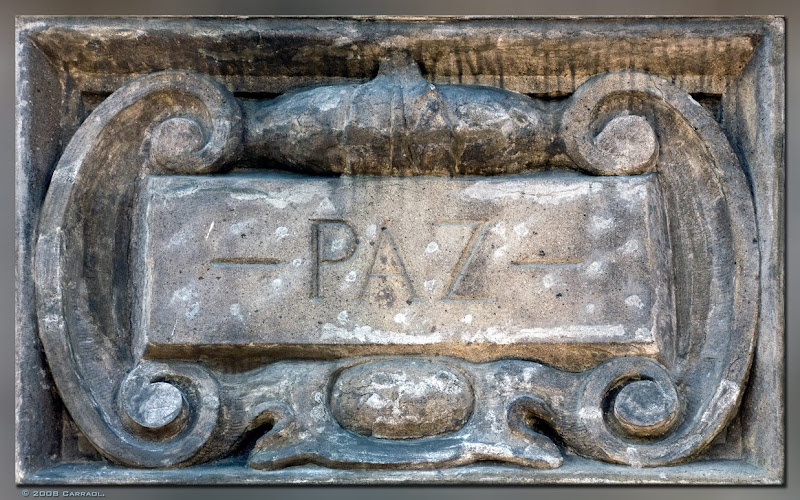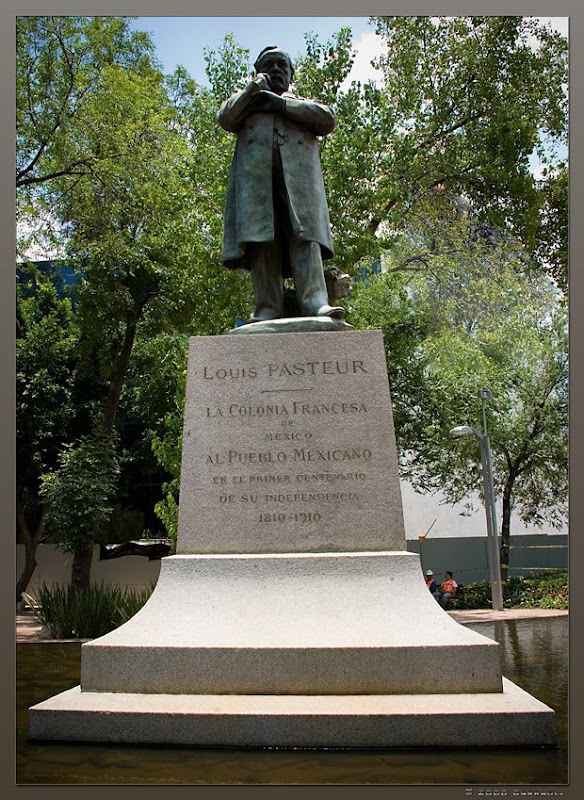 |
|
"I am at war with the
obvious."
William Eggleston
music+image
Thanks for visiting, please be sure
that I read each and every one of your kind comments.
I appreciate them all. Stay tuned…
|
The Magic of the Cities.
Zen promotes the rediscovery of the obvious, which is so often lost in its familiarity and simplicity. It sees the miraculous in the common and magic in our everyday surroundings. When we are not rushed, and our minds are unclouded by conceptualizations, a veil will sometimes drop, introducing the viewer to a world unseen since childhood. ~ John Greer
Thursday, October 6, 2016
Independence Angel
Saturday, November 12, 2011
Who Are You?
Tuesday, August 24, 2010
Heroes
 |
| Heroes of the past crying for the present. |
Sunday, June 20, 2010
Place Charles de Gaulle
 |
| Arc de Triomphe |
 |
| Place Charles de Gaulle |
 |
| The Tomb of The Unknown Soldier |
Tuesday, December 9, 2008
Paz / Peace


El Ángel de la Independencia ("The Angel of Independence"), most commonly known by the shortened name El Ángel and officially known as Columna de la Independencia, is a victory column located on a roundabout over Paseo de la Reforma in downtown Mexico City.
El Ángel was built to commemorate the centennial of the beginning of Mexico's War of Independence, celebrated in 1910. In later years it was made into a mausoleum for the most important heroes of that war. It is one of the most recognizable landmarks in Mexico City, and it has become a focal point for both celebration or protest. It bears a resemblance to the Victory Column in Berlin.
The base of the column is quadrangular with each vertex featuring a bronze sculpture symbolizing Law, War, Justice and Peace. Originally there were nine steps leading to the base, but due to the sinking of the ground fourteen more steps were added. On the main face of the base, which faces downtown Mexico City, there is an inscription reading La Nación a los Héroes de la Independencia ("The Nation to the Heroes of Independence"). In front of this inscription is a bronze statue of a giant lion led by a child, representing strength and the innocence of youth during War but docility during Peace.
music+image
Gracias por su visita / Thanks for visiting.
Sunday, December 7, 2008
Justicia / Justice

Justice

… Finalmente, una condicion importante para el desarrollo de la biofilia ( Amor a la Vida ) es la libertad. Pero no es condicion suficiente “la libertad respecto de” trabas politicas. Si ha de desarrollarse el amor a la vida, tiene que haber libertad “para”, libertad para crear y construir, para admirar y aventurarse. Tal libertad requiere que el individuo sea activo y responsable, no un esclavo ni una pieza bien alimentada de la maquinaria.
Resumiendo, el amor a la vida se desarrollara mas en una sociedad en que haya: seguridad en el sentido de que no estan amenazadas las condiciones materiales basicas para una vida digna, justicia en el sentido de que nadie puede ser un fin para los propositos de otro, y libertad en el sentido de que todo individuo tiene la posibilidad de ser un miembro activo y responsable de la sociedad, éste ultimo punto es de particular importancia. Hasta una sociedad en que existen seguridad y justicia puede no ser conducente al amor a la vida si no se estimula la actividad creadora del individuo. No basta que los hombres no sean esclavos. Si las condiciones sociales fomentan la existencia de automatas, el resultado no sera amor a la vida, sino amor a la muerte.
De: El Corazón del Hombre. Erick Fromm
From: The Heart of Man by Erich Fromm.
music+image
Gracias por su visita / Thanks for visiting.
Thursday, July 17, 2008
Cuauhtemoc

Monument to Cuauhtemoc on Paseo de la Reforma Ave.
On August 13, 1521, Cuauhtémoc went to call for reinforcements from the countryside to aid the falling Tenochtitlán, after eighty days straight of urban warfare against the Spanish. Of all the Nahuas, only Tlatelolcas remained loyal, and the surviving Tenochcas looked for refuge in Tlatelolco where even women took part in the battle. Cuauhtémoc was captured while crossing Lake Texcoco in disguise. He surrendered to Hernán Cortés along with the surviving pipiltin (nobles), and offered him his knife and asked to be killed. At first, Cortés treated his foe chivalrously. "A Spaniard knows how to respect valor even in an enemy," he declared. However, he allowed Aldrete, the royal treasurer, to have Cuauhtemoc tortured to make him reveal the whereabouts of hidden treasure. Cuauhtémoc, insisting that there was no hidden treasure, stood up under the ordeal. [ Wiki. ]
Gracias por su visita / Thanks for visiting.
Wednesday, May 28, 2008
Cristobal Colon / Christopher Columbus

Monument to Christopher Columbus (bt. August and October 1451 – May 20, 1506) was a navigator, colonizer, and explorer whose voyages across the Atlantic Ocean led to general European awareness of the Western Hemisphere and of the American continents within. Though not the first to reach the Americas from Afro-Eurasia — preceded some five-hundred years by Leif Ericson, and perhaps others — Columbus initiated widespread contact between Europeans and indigenous Americans. With his several hapless attempts at establishing a settlement on the island of Hispaniola, he personally initiated the process of Spanish colonization which foreshadowed general European colonization of the "New World". The term Pre-Columbian is sometimes used to refer to the people and cultures of the Americas before the arrival of Columbus and his European successors. [ Wiki. ]
Gracias por su visita / Thanks for visiting.
Friday, May 23, 2008
Louis Pasteur


The French Colony of Mexico to the Mexican people in the 1st Centenary of its Independence. 1810-1910.
Louis Pasteur (December 27, 1822 – September 28, 1895) was a French chemist and microbiologist best known for his remarkable breakthroughs in the causes and prevention of disease. His experiments supported the germ theory of disease, also reducing mortality from puerperal fever (childbed), and he created the first vaccine for rabies. He was best known to the general public for inventing a method to stop milk and wine from causing sickness - this process came to be called pasteurization. He is regarded as one of the three main founders of microbiology, together with Ferdinand Cohn and Robert Koch. He also made many discoveries in the field of chemistry, most notably the asymmetry of crystals. [ Wiki. ]
Gracias por su visita / Thanks for visiting.
Monday, October 29, 2007
Angel de la Independencia

El Ángel de la Independencia ("The Angel of Independence"), most commonly known by the shortened name El Ángel and officially known as Columna de la Independencia, is a victory column located on a roundabout over Paseo de la Reforma in downtown Mexico City. (Wiki)
Gracias por su visita / Thanks for visiting.
Tuesday, September 4, 2007
Angel de la Independencia

El Ángel de la Independencia ("The Angel of Independence"), most commonly known by the shortened name El Ángel and officially known as Columna de la Independencia, is a victory column located on a roundabout over Paseo de la Reforma in downtown Mexico City.
El Ángel was built to commemorate the centennial of the beginning of Mexico's War of Independence, celebrated in 1910. In later years it was made into a mausoleum for the most important heroes of that war. It is one of the most recognizable landmarks in Mexico City, and it has become a focal point for both celebration or protest. It bears a resemblance to the Victory Column in Berlin. From Wiki.



